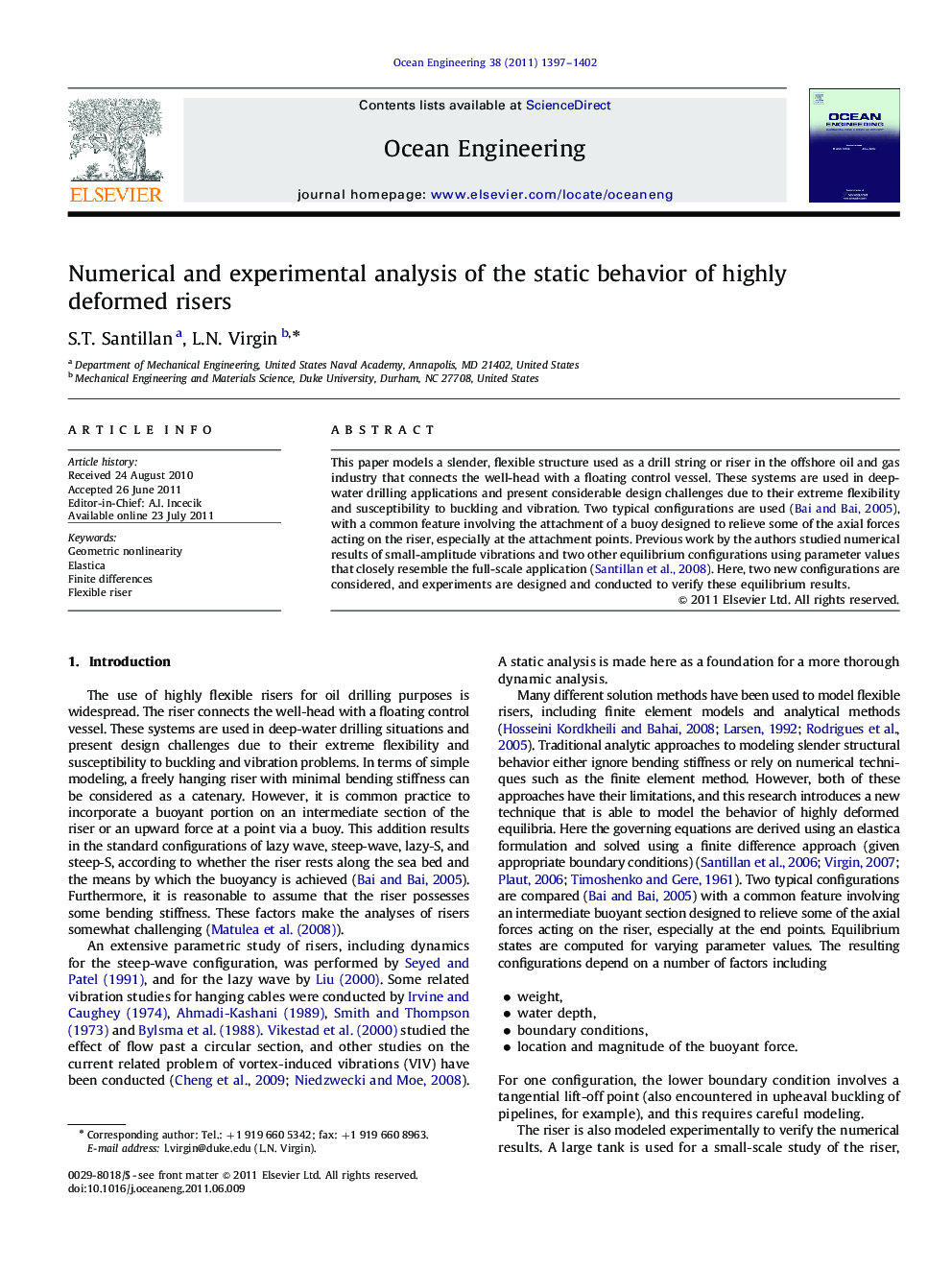| Article ID | Journal | Published Year | Pages | File Type |
|---|---|---|---|---|
| 1726573 | Ocean Engineering | 2011 | 6 Pages |
This paper models a slender, flexible structure used as a drill string or riser in the offshore oil and gas industry that connects the well-head with a floating control vessel. These systems are used in deep-water drilling applications and present considerable design challenges due to their extreme flexibility and susceptibility to buckling and vibration. Two typical configurations are used (Bai and Bai, 2005), with a common feature involving the attachment of a buoy designed to relieve some of the axial forces acting on the riser, especially at the attachment points. Previous work by the authors studied numerical results of small-amplitude vibrations and two other equilibrium configurations using parameter values that closely resemble the full-scale application (Santillan et al., 2008). Here, two new configurations are considered, and experiments are designed and conducted to verify these equilibrium results.
► A numerical method (based on the elastica) is used to compute the profile of slender risers. ► The placement of a supporting buoy is used to reduce stresses. ► Some experiments are performed and behavior matches analysis quite closely.
